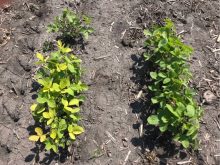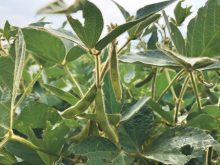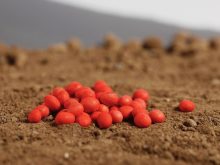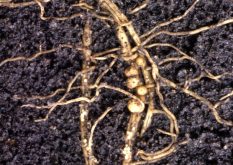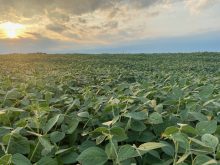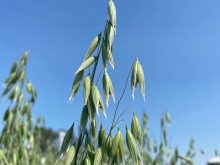Soybeans have been at the vanguard of longer-season crops moving into the Prairie region. The soybean area in Western Canada has expanded rapidly over the past two decades. Manitoba’s soybean acreage increased from zero to over one million acres in the first decade of the 2000s. Manitoba’s soybean acreage continued to increase in the past decade and registered a peak of 2.29 million acres in 2017. Saskatchewan acreage increase went through an even more rapid expansion in the last decade, from essentially zero in 2012 to 850,000 acres in 2017.
Since the 2017 peak, soybean area has dropped, with western Canadian area at 1.49 million acres this year. That drop since 2017 has been mostly due to challenging growing conditions and strong prices for other crops. Although genetic improvement in soybeans has continued over the past seven years, economic conditions have reduced soybean area.
Most of the increase in soybean area has been driven by the development of suitable varieties for the growing conditions in the northern U.S. and southern Prairies. The improvement in genetics has resulted in the expansion of cropped area. Climate change has also played a role in the soybean acreage expansion.
Read Also

Health hazards are often overlooked risks on the farm
While quite different from the dangers posed by farm machinery, hazards such as loud noise or sun exposure require the same proactive attention, the Canadian Agricultural Safety Association says.
There have been many studies that have examined the changes to the climate in Western Canada over the past couple of decades. A review of the research on climate change in the agricultural growing regions in Canada was conducted by Mapfumo et al. in the Canadian Journal of Plant Science in 2023. The authors examined the research to date of the parameters that are important to producing crops.
Of the factors examined the in the review, the three most critical parameters for soybean production are growing season precipitation, growing season length and air temperatures during the growing season. The research indicates that changes in all three parameters have occurred over the past 100 years.
Some rain must fall
Every farmer knows precipitation is the critical element for producing crops on the Prairies. The weather during the past two growing seasons certainly proves the point that “rain makes grain.” Research indicates that growing season precipitation has increased since 1900. In Alberta’s agricultural region it has increased by 18 mm over the period beginning in 1900. In another study, Prairie rainfall has increased by 39.2 mm over the growing season in the period from 1956 to 1995.
The increase in precipitation is welcome news for soybean production in the coming years. Soybean yields are generally directly related to the amount of moisture received during the growing season. Rains are very critical during August for soybeans, when the crop is going through its reproductive growth stage. The general increase in growing season precipitation should translate to increased precipitation during August.
Change of season
Growing season length is the second most critical factor in producing crops in Western Canada. This is particularly true for soybeans, which are vulnerable to an early-season frost. Western Canada has seen its growing season increase by between three and 12 days, using data from 1920 to 2020.
Frost dates have also changed in Western Canada with the median spring frost earlier by 11.1 days and the fall frost dates were later by 9.4 days. A longer growing season allows soybeans to expand their footprint in the Prairies.
Growing by degrees
The heat experienced over the past two growing seasons has certainly brought temperatures to the forefront in terms of risk to crops. The maximum air temperatures have been increasing by 2.4 to 3.6 C during the period from 1950 to 2010.
The increase in maximum temperatures is probably the largest concern for soybean production in the future. Although temperatures during the growing season are expected to be higher than current levels, soybean yields are not likely to be significantly impacted by the higher temperatures.
The warmer temperatures are also expected to increase the growing degree days (GDD). GDDs have increased by 95 days in the Prairies over the period between 1948 to 2016. Another study in Alberta indicated GDDs increased by 77.5 (6.2 per cent) during the period from 1901 to 2002. The increase in growing degree days is essential in expanding the soybean area in Western Canada.
In conclusion, climate change is expected to expand the soybean growing area in Western Canada. With the increase in area, soybean production in Western Canada during the coming years. Economic factors will play a large role in determining the extent of the acreage expansion. The drop in soybean area over the past five years has been largely due to deteriorating prices for soybeans relative to competing crops.




